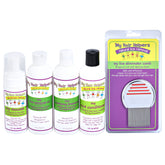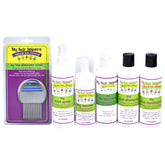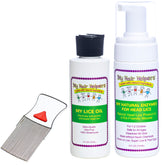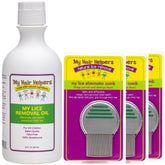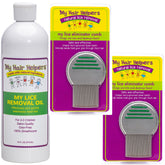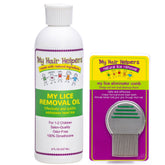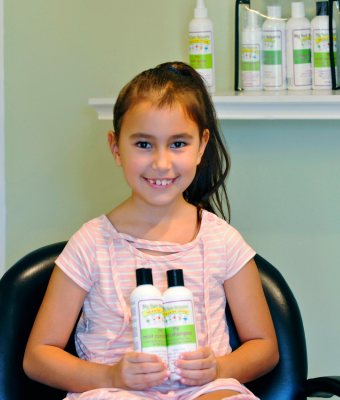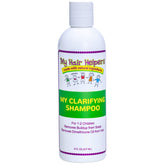HOW MANY EGGS DO HEAD LICE LAY?

Head lice (tiny, wingless insects that live on the human scalp and feed on blood) may not spread disease, but they are still notoriously annoying to deal with. They can cause significant discomfort, especially if they aren’t addressed right away, and they can be difficult to get rid of. A key reason for their persistence is because of how quickly lice reproduce.
How many eggs do head lice lay exactly?
Let’s cover how fast lice multiply so that you have the right information on hand. As you’ll learn, quick detection is everything.
How Many Eggs Can One Louse Lay?
A single adult female head louse can lay up to 6 to 10 eggs per day. Over her lifetime—which typically lasts about 30 days—she can lay as many as 100 to 150 eggs. These eggs are commonly referred to as nits.
Lice do reproduce sexually, with male lice actively seeking mates. Mating takes about 30 minutes or more, and then the mated female can start laying eggs. What might come as a surprise is that a female louse only has to mate once to produce eggs for her entire lifespan!
Female lice store sperm, which is why just one louse can cause a full-blown infestation in a matter of weeks.
Where Are the Eggs Laid?
Female lice lay their eggs close to the scalp, usually within 1/4 inch of the skin, because the warmth of the human head helps the eggs incubate. They use a glue-like substance to firmly attach the nits to individual strands of hair, which is often behind the ears and near the nape of the neck.
This glue-like material comes from the female louse’s accessory gland. It encapsulates the egg, protecting the embryo and ensuring it remains resilient and difficult to remove. This is why traditional head lice solutions typically require a second application one week after the initial one.
Why This Matters: The Infestation Cycle
Because lice eggs are small, white or yellowish, and firmly attached to the hair shaft, they’re hard to see and remove. And since adult lice can lay eggs daily, reinfestation can happen quickly if eggs are missed during an application.
This is why most effective lice management plans include follow-ups about a week after the first application to get rid of newly hatched lice, along with regular combing. While you don’t need to deep clean your home, washing bedding, sheets, and recently worn hats can be helpful. Hair accessories, combs, and brushes can be sanitized as well.
Early Identification Can Help You Beat Lice Infestations
To recap, one adult louse can lay up to 150 eggs in her lifetime, with 6 to 10 eggs per day being the norm. Eggs hatch in 7 to 10 days and become adults in under two weeks.
Because of this rapid life cycle, early detection and consistent applications are key to managing lice infestations. No matter which solution you’re using, it’s essential to address both the live lice and their eggs to break the cycle.
If you're dealing with a stubborn infestation, don’t panic—you're not alone, and effective solutions are available. You can find head louse products and lice defense products made from natural ingredients at My Hair Helpers. All products can be quickly shipped to your home for swift management of head lice infestations.


